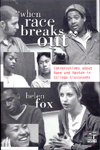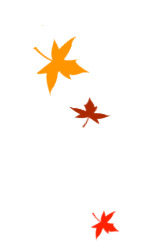It was a pleasure to read Herbert Northcott’s essay, Going Native: A White Guy’s Experience Teaching in an Aboriginal Context. Thus far in the course readings I have felt disconnected and alienated by the lack of substantial examples of how Whiteness manifests itself in the classroom, and what a multicultural approach to instruction can and should accomplish. Northcott has given me something real and meaningful to consider and has engaged me on a much deeper level than any of the previous readings have, and for that I am thankful to him.
I have sometimes said that Canada’s treatment of the Aboriginal people is this nation’s greatest shame, without really knowing what I was talking about. The fact that I didn’t know what I was talking about was a testament to the reasons for which I, as a Canadian, should be ashamed. I live on the South Shore, next to the Kahnawake reservation, and every morning I take the 138 through that reservation on my way in to school. Still, when I was younger I knew almost nothing about my Mohawk neighbors, except for the fact that my grandmother used to go to Kahnawake to play Bingo, and my father went there buy cigarettes, and every once in awhile the Mohawks barricaded the Mercier bridge for reasons I didn’t understand and were never properly explained to me. For a child, this information is more than enough to form an opinion. The gambling implied moral degeneracy (nevermind that the good residents of Chateauguay flocked to the reserve to partake in said degeneracy, and that the same Bingo games were played in our Church’s basement every Saturday night), the smoking implied a lack of hygiene and a general contempt for clean air and healthy lungs (nevermind that my entire family smoked when I was young), and the barricading of the bridge implied lawlessness, even terrorism. There were rumors at my elementary school that the Indians had secretly strapped sticks of dynamite to the bridge and one day, they’d detonate the explosives during rush-hour to the peril of all the White commuters – that my parents crossed that bridge every day on their way to and from work chilled me to the bone. Every time they were late picking me up from my grandmother’s house I would pace by the front door, staring out into the blackness, nauseous with the melodramatic notion that finally, the Indians had blown up the bridge and my parents had plummeted to the bottom of the St. Lawrence River.
 |
in June of 2007. |
Of course, as I matured I realized that my fears and prejudices were founded on ignorance, though for a long time I remained conscious of that ignorance without willing myself out of it. My formal education certainly did nothing to help, and neither did my informal education (that is to say, television and newspapers). After dating a wildly good-looking Mokawk boy in grade six, I had no exposure to Aboriginal culture until my involvement with the Girl Guides of Canada three years ago. I had been a Guide when I was younger and I am an experienced camper, and at the time I was toying with the idea of committing myself to education as a career so I applied for a job at the Guides’ summer camp in the Laurentians.
The Wa-thik-ane campgrounds are beautiful, minimalist and well-kept, scattered around a lake so clean you can run to the end of the dock, leap out into the air, and see the pebble-covered bottom of the lake clearly, just before you hit the surface of the water. The individual campsites are named after Aboriginal communities – Cree, Micmac, Algonquin, Iroquois, Huron, Montagnais, Mohawk, and Chippewa. The naming scheme charmed me, though I found that nobody on the staff had any substantial knowledge of these Aboriginal cultures. Nevertheless, my interest was piqued and so I brought up some books on First Nations history, finding myself most interested by their cosmologies, creation myths and metaphysical ideologies (as a Godless Liberal, it was all deliciously exotic to me). Later in the summer, our camp was treated to a visit from a group of Innu children from Eastern Quebec, most of whom didn’t speak English, though some spoke a little French. Watching the visitors get along (and not get along) with our girls was an educational (and humorous) experience for me, and though I often didn’t have a clue what the Innu children were saying, I was sure that I liked them. I found them to be warm and joyous, eager to learn English words and teach us songs in Innu, so much so that when our girls refused to go to bed on time I joked that I would happily trade them for a few of the Aboriginal children, and if they stayed up all night and then slept in past colours then they’d wake up on a bus halfway to the Mashteuiatsh reserve near Lac Saint-Jean.
There was some chafing, however, especially at the dinner table. The Innu children had little regard for the kinds of table manners our girls had been taught (and which were strictly enforced by members of the camp staff, including myself). Often, the non-Aboriginal children were disgusted by their new friends’ disregard for forks and knives, and they were angry with me for not punishing the newcomers the same way I punished them for “playing with their food.” The language barrier was another difficulty, sometimes resulting in hurt feelings or incoherent arguments with a great deal of ineffective yelling and arm-flailing. Mostly, though, it was the Innu children’s lack of respect for any non-Aboriginal authority that caused the most problems. Even the children who understood French would not respond to French directions by anyone who was not their leader. During activities, they would not remain on task and were often found wandering off on their own, quietly stubborn to any instruction I gave to rejoin the group. I remember privately questioning how some of these children would ever be able to participate fully in Canadian life if they would not respond to anyone outside their circle for any meaningful length of time.
 |
Lac Bouchette, seen here at dusk. |
I asked, “How did teaching occur in Cree culture in the past.” It was observed that in the past teaching and learning often involved storytelling and example, and learning was experimentally based. Furthermore, communication often took place in a circle where all were considered more-or-less equal.
Taken together with Frideres’ observations of the behavior of minority students in his predominantly White classrooms, this gives me a more substantial understanding of why some of our group activities with the Innu girls were unsuccessful. I now feel better equipped to answer Northcott’s question about how a White instructor can become “culturally sensitive” and how cultural sensitivity can be practiced in the classroom.
The first step towards cultural sensitivity is, I think, education about the culture to which one wishes to be sensitive. I continue to feel disadvantaged when commenting on issues of Aboriginal education because of my general ignorance of Aboriginal history, culture and the political issues which largely define Aboriginal communities in the Canadian media. A superficial reading of recent policy papers and proposals by the federal government and the Aboriginal community about education renders me surprised that these issues are not spoken about more often by the press, because it is a constantly evolving debate of critical importance to our future as a nation. What’s more, I think this debate is also an integral part of our past as a nation, and yet I was never taught about Aboriginal history in school.
The second step towards cultural sensitivity is an open dialogue with Aboriginal leaders, parents and educators. Just as Northcott spoke to his mature students about what kind of pedagogy they would be most comfortable with, I think non-Aboriginal instructors who teach Aboriginal students should have access to conversation with, or at least resources produced by, members of that child’s community. Recent efforts to reform educational policy to give more control to Aboriginal people over the curriculum taught in their schools seem promising, and the curricular changes produced by Aboriginal educators to respond to this new responsibility will be invaluable to teachers who wish to make their classrooms more inclusive.
In fact, I don’t believe the contributions of Aboriginal educators to the curriculum would be beneficial only to Aboriginal students. Indeed, all Canadian students would benefit from a balanced and accurate account of the history, economy, values and culture of their own country. On this note, I made a particular connection with Northcott when he opined that the student-centered learning strategy he employed with his Aboriginal students would be equally beneficial to a classroom of White students:
I have always disliked the pedagogical tradition of a lecturer lecturing to a large and relatively passive audience of students… I have accumulated evidence over the years I have taught in First Nations colleges that Aboriginal students do not do as “well” as non-Aboriginal students in lecture-based courses with multiple-choice examinations; nevertheless, I have long been convinced that such courses are in the best interests of neither Aboriginal nor non-Aboriginal students. (65)
I agree entirely and found myself envying the Aboriginal students their learning environment with Northcott, wondering if I could modify the strategy to make it viable in my own (future) classrooms.
Northcott’s question about how Aboriginals and Whites should negotiate pedagogy in a changing world is a natural next step in our discussion. On the institutional level, as I have already mentioned, changes are underway to give Aboriginals more autonomy over the content of their curriculum (the history of White control over Aboriginal education is as fascinating as it is painful, but I will not elaborate on it here – please see my response to Lindberg, and the references I provide on my link list). High on the list of amendments to be made is the course textbooks, particularly for history. As Northcott notes on page 58, "As I received possible textbooks, it struck me that the texts were written for the most part by Euro-Canadians about our society dominated by Euro-Canadian social structure and cluture."
The limitations placed on curriculum necessarily translate to limitations placed on pedagogy – standardized exams are only a very obvious example of why this is so. While it is, I think, very important that Aboriginal children become comfortable and proficient with the methods of evaluation prevalent in Canadian universities, familiarization with these methods should not come at the expense of their ethnic identities, and certainly not at the expense of the quality of their education. Striking the correct balance is essential to producing good graduates who are not only prepared to face the realities of contemporary Canadian life but who also have a solid connection to their native communities, language and culture. This will be done by ongoing and productive dialogue between First Nations leaders and the federal government. As I have already indicated, the developments made between these two parties will be invaluable to all educators as a new and potentially fruitful approach to educating all children.













1 comment:
Fantastic beat ! I wish to apprentice while you amend your site, how could i subscribe for a blog site?
The account aided me a acceptable deal. I had been a little bit acquainted of this your broadcast provided bright clear concept
My blog post :: cheap cigarettes
Post a Comment